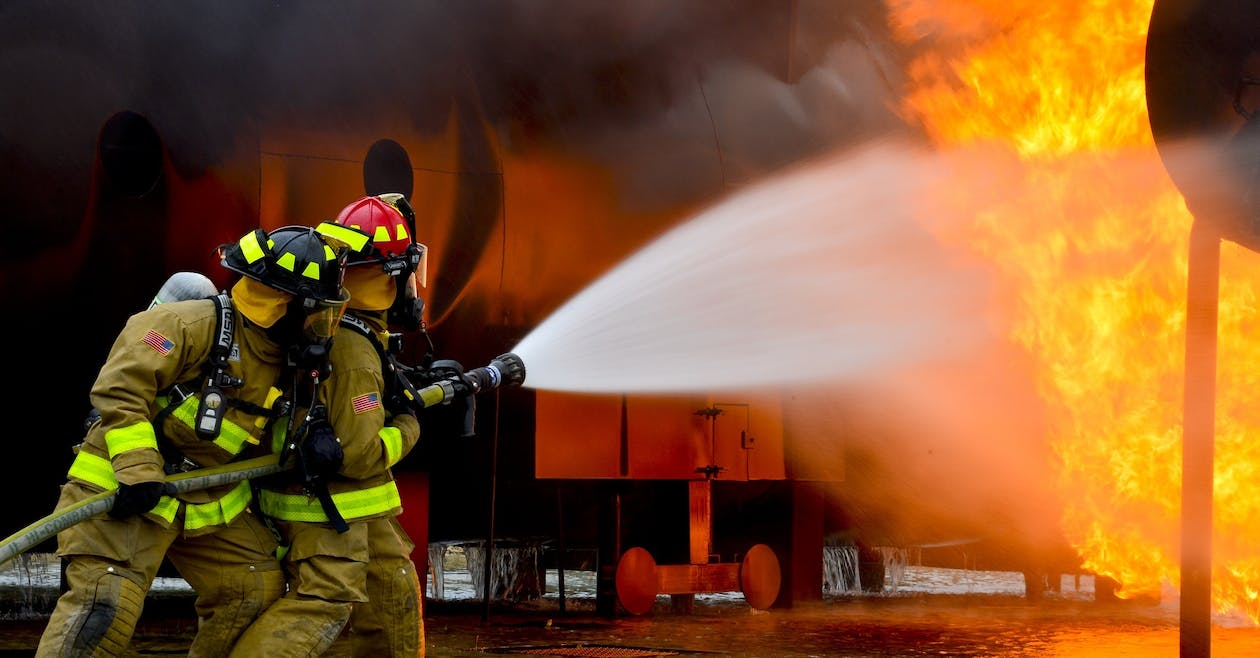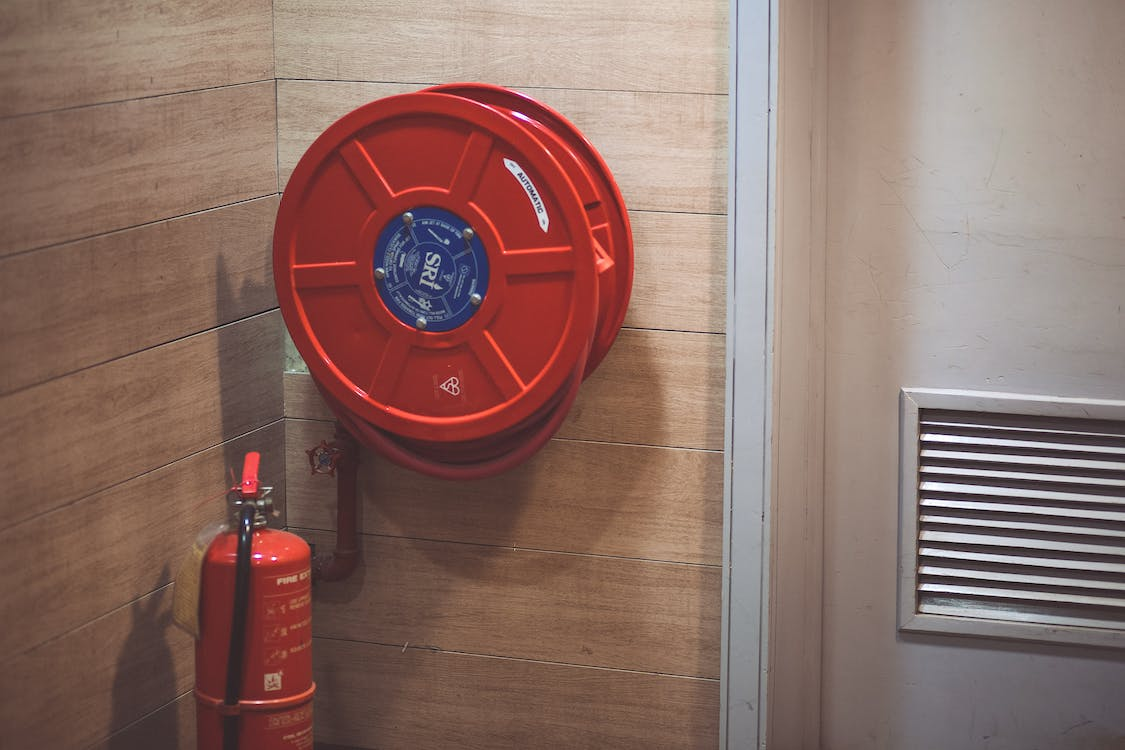In the realm of corporate responsibility and risk management, the need for comprehensive emergency fire management plans is essential. While waste disposal might not seem directly related, it plays a crucial role in preventing and mitigating fire hazards within a company’s premises.
In this blog, we will delve into the world of effective emergency fire management plans, shedding light on the importance of waste disposal as a foundational element of fire prevention.
Understanding the Impact of Poor Waste Disposal on Fire Safety

Before we explore the components of a successful emergency fire management plan, it’s essential to comprehend how waste disposal can become a fire hazard within an organization. Poorly managed waste, whether in the form of combustible materials or hazardous chemicals, can significantly increase the risk of fire. Spills, leaks, and improper storage can lead to unforeseen consequences, especially in industrial or manufacturing settings. Therefore, ensuring that waste disposal practices are in line with safety guidelines and regulations is a fundamental step toward fire prevention.
Step-by-Step Guide to Creating an Effective Fire Management Plan

1. Assessing Fire Risks: A Crucial Starting Point
The foundation of any effective emergency fire management plan is a thorough assessment of fire risks within your company. This includes identifying potential ignition sources, flammable materials, and assessing the adequacy of fire prevention and protection measures. Waste disposal practices should be a key focus during this assessment. Are there areas within your facility where waste materials are stored or disposed of? Are these areas properly equipped with fire prevention measures, such as fire-resistant containers, fire extinguishers, and clear evacuation routes?
2. Creating a Comprehensive Fire Prevention and Protection Strategy
Once you’ve assessed the fire risks associated with waste disposal, it’s time to develop a comprehensive fire prevention and protection strategy. This should include a combination of proactive measures to reduce the risk of fire and reactive measures to mitigate its impact if it does occur. Key components of this strategy include:
- Fire Safety Training:Ensure that all employees are well-trained in fire safety protocols, including how to handle waste disposal safely. This should involve proper disposal methods, identifying hazardous materials, and responding to fire emergencies.
- Fire-Resistant Waste Containers:Implement the use of fire-resistant waste containers in areas where waste materials are stored. These containers can help contain fires and prevent them from spreading.
- Adequate Fire Extinguishers:Place fire extinguishersstrategically throughout your facility, with a specific focus on areas where waste disposal takes place. Regularly inspect and maintain these extinguishers to ensure they are in proper working condition.
- Evacuation Plans:Develop and communicate clear evacuation plans to all employees, including designated meeting points and procedures. Ensure that these plans account for different scenarios, including fires resulting from waste disposal.
- Fire Detection Systems:Install fire detection systems that can quickly identify potential fires, especially in areas where waste materials are handled. These systems can help trigger early warnings and automatic fire suppression measures.
4. Regulatory Compliance and Waste Disposal
Ensuring compliance with local and national regulations concerning waste disposal is essential for fire safety. Many of these regulations include specific guidelines on how hazardous materials should be handled and disposed of safely. Non-compliance not only poses legal risks but also increases the likelihood of fire hazards.
Companies must maintain meticulous records of waste disposal processes and keep documentation of the disposal of hazardous materials. This information should be readily available for inspection by regulatory authorities. Staying in line with these regulations not only minimizes the risk of fire but also ensures environmental responsibility.
5. Implementing Regular Inspections and Audits
Effective fire management plans are not static but dynamic, evolving with your company’s changing needs and circumstances. Conduct regular inspections and audits to ensure that waste disposal practices and fire safety measures are up to date. These inspections should cover all aspects of your fire management plan, including waste disposal areas, fire extinguishers, evacuation routes, and fire detection systems.
6. Collaborate with Local Fire Departments
In the event of a fire, swift and efficient collaboration with local fire departments is crucial. Establish communication channels and relationships with your local fire department to ensure that they are familiar with your facility and its potential fire risks. Conduct joint drills and exercises to test the effectiveness of your emergency fire management plan and the response of local firefighters.
7. Develop a Crisis Communication Plan
Effective communication is vital during a fire emergency. Develop a crisis communication plan that outlines how to inform employees, clients, and stakeholders about the situation. Make sure the plan covers the use of various communication channels, including emails, text messages, and public address systems.
8. Employee Involvement and Awareness
Creating a culture of fire safety within your organization is not just the responsibility of management; it involves every employee. Engage your workforce in fire safety initiatives and encourage them to report any unsafe conditions or practices related to waste disposal or fire prevention. Regular training and awareness campaigns can help instill a sense of responsibility among your employees.
9. Test and Update Your Plan Regularly
Testing the effectiveness of your emergency fire management plan is critical. Conduct regular fire drills and simulations to evaluate the response and efficiency of your plan. Based on the results of these tests, make necessary updates and improvements to ensure that your plan remains current and effective.

Final Thoughts
In the corporate world, the potential for fire emergencies is a reality that no company can afford to ignore. Waste disposal, while seemingly unrelated, plays a significant role in fire prevention and mitigation. By understanding the impact of poor waste disposal on fire safety, assessing fire risks, and implementing a comprehensive fire prevention and protection strategy, companies can significantly reduce their vulnerability to fire incidents.
To build an effective emergency fire management plan, it’s essential to maintain regulatory compliance, conduct regular inspections, collaborate with local fire departments, and develop a crisis communication plan. Engage employees, create a culture of fire safety, and regularly test and update your plan to ensure that it remains robust and responsive to evolving circumstances.
Implement a Customized Fire Safety Plan Designed by Facilities USA to Keep Your Company Safe
Don’t leave your company’s safety to chance. Choose Facilities USA for tailored fire safety solutions. Our comprehensive services include waste removal, commercial waste disposal, commercial recycling, special disposal, emergency light testing, and more. Keep your business secure with our expert fire safety plan. Contact us today!



